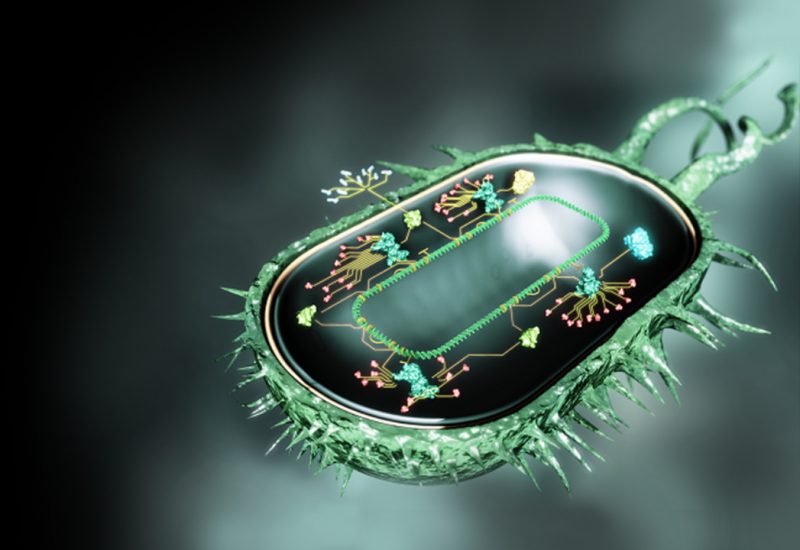DNA microchips, also known as microarrays, are strong bases generally made of glass or silicon, upon which the DNA is added in an orderly way. The DNA microchip is a novel tool to analyze mutations in genes, such as Breast Cancer 1 (BRCA1) and Breast Cancer 2 (BRCA2), which cause breast and ovarian cancers. The chip is similar to a computer chip; on the outer part, every chip has many short, synthetic, single-stranded DNA arrangements that, as a group, form the normal gene.
Microchip technology was developed from Southern blotting, which is a way used in molecular biology to discover particular DNA sequences. Miniaturized microchips were first used in 1995; this technology relies on the use of machines and robots in delivering the DNA samples.
The microchip functions by getting a sample from the subject’s blood and a control sample, which does not have any mutated genes, then scientists denature the DNA in the specimens. This “denaturing” is a method in which scientists separate the two interdependent DNA strands into single-stranded molecules. After that, they reduce the size of the long DNA strands into smaller easier-to-manage parts, marking each part by adding a florescent dye.
The patient’s DNA is marked with a green dye, while the control is marked with a red dye. Both groups are introduced to the chip and permitted to hybridize to the artificial BRCA1 or BRCA2 DNA on the chip. If the patient does not have these gene mutations, both the red and green specimens will attach to the arrangements on the chip. However, if the patient has these mutations, their DNA will not attach normally in this area. At that time, the researcher can check this area more thoroughly to confirm the presence of a mutation.

There are numerous uses of DNA microchips:
1. Disease Diagnosis and Genetic Engineering: This sort of technology allows scientists to know more about various diseases, such as heart diseases, mental illnesses, and infectious diseases and to focus on cancer research. Cancer nowadays is classified according to the organ where the tumor grows, but using DNA microchips will enable scientists to classify it based on gene mutations in tumor cells. This will help in the production of specifically designed medicine that will target this particular cancer. Moreover, knowing the gene mutations that cause these diseases can help in their prevention using gene therapy and genetic engineering.
2. Drug Discovery: DNA microchip technology has a wide-ranging function in Pharmacogenomics, which studies the connection between therapeutic responses to drugs and the patients’ genetic profiles. Comparative investigation of diseased and normal cells will aid in identifying the biochemical composition of the proteins created by the diseased genes. This enables researchers to formulate drugs that can fight these proteins and decrease their impact.
3. Gene Discovery: DNA microarrays aid in discovering new genes, and learning about the functional and expressional levels according to various conditions.
4. Toxicology Research: Toxicogenomics is the science that deals with the relationship between response to toxins and genetic profile mutations of the exposed cells. Microchip science provides a healthy research environment on the effect of toxins on the cells and the possibility of inheritance by the offspring.
Other advantages of these chips are that they provide information on many genes while only doing one test, as there is no more need to perform numerous tests. This test provides quicker and more accurate results. Microchips also help discover which genes are working in the various mitosis (cell reproduction) levels and which genes are working during growth (as fruit growth). This may be implemented in determining vital genes that maybe used as the foundation for a screen for expected cultivation decisions and choices.
Some disadvantages of DNA microchips are that they are costly to create, demanding many results need a lot of time for analysis, which is already a complicated process, and the chips are perishable and do not survive for a long time, which proves to be a huge disadvantage of this technology.
With the availability of new information and developments, researchers will be able to use microchips to pose more complicated questions and to carry out more difficult experiments, which in turn may lead to breakthroughs in the fields of disease diagnosis and drug discovery, amongst others, while working on decreasing the disadvantages.
*Published in SCIplanet printed magazine, Summer 2017 Issue.
References
genome.gov
premierbiosoft.com
slideshare.net
biotechnologyforums.com
bioinfo.cs.technion.ac.il
sciencelearn.org.nz